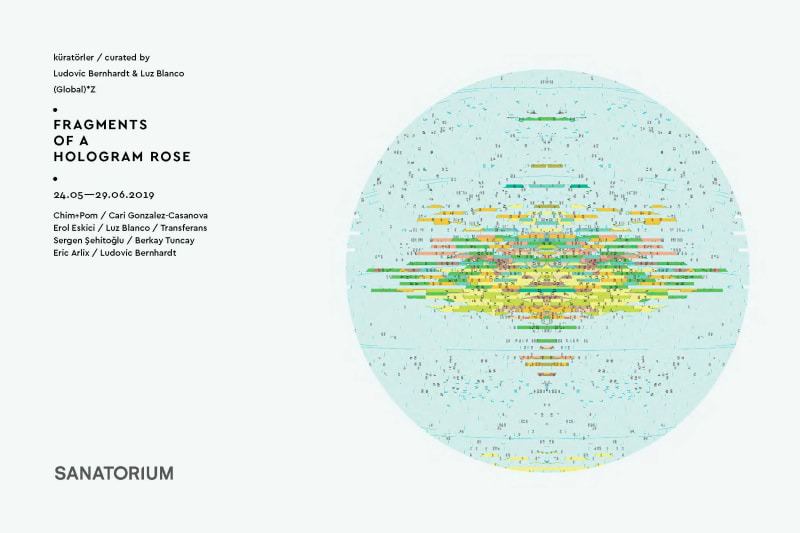Ludovic Bernhardt, Artist and Curator, April 2019, Paris
The title of the show is used by permission of William Gibson, author of the novel Neuromancer.
The starting point of this exhibition, which brings together nine artists of different nationalities, is the short story Fragments of a Hologram Rose written in 1977 by William Gibson. We thank its author, particularly known for his novel Neuromancer and creator of the term cyberspace, for permitting us to use the title of his short story for our exhibition, which takes a personal look at this dislocated story where poetic hallucinations contaminate communication networks.
By exhibiting artworks steered around an autonomous literary experience, we think that art and literature have something crucial to share, beyond the misleading semiotics aspects. We assert that we can enjoy a touch of literature within a 21st century’s artwork, whether it uses shapes, images, or words, as raw material. A dialogue - as a hybrid experience - is possible, without any borders or restrictions. It seems to us that contemporary literature is a field of reflection for artists, just as contemporary art could be “read” by writers and novelists: a difficult interchange between two different creative and semiotic families we must join by hook or by crook, as many artists and movements like Fluxus did. William Gibson belongs to this family of writers infused with the contamination of literature by art and images, and vice versa.
Maurice Blanchot, in his book The Space of Literature, published in 1955, raises the idea of the trans-mutational nature of words, linked to their iconic spectrums. He talks about the necessity, which determines the efforts of the writer, “that he belongs to the shadow of events, not their reality, to the image, not the object, to that which enables words themselves to become image, appearances - not signs, values, the power of truth.”
Not far from this sense, our exhibition invites to interface two worlds, an artwork that cannot be reducible to its nature of sign neither of object.
To be more engaged in the nature of each artwork, we propose an exhibition made of fragments, of parts released from an inexistent entirety: each image constitutes a partial shadow of an impossible totality, a fragmentary moment of a cataclysmic narrative, a composite fraction of an exhibition that will never be a homogeneous whole. We present pieces connected by a certain contagion induced by their confused and blurry nature. Thus, they could be at the same time literary and visual: they explore literary fragments that, side by side, develop a type of narrative to rearticulate, where the words intimately cohabit with their counterpart, images. The exhibition documents an energy conveyed by heterogeneous works that reflect, not only our culture and our society but also critical relations with our present which is decidedly part of a “Gibsonian” space.





